Ergonomic product design & testing
Ergonomic design for a storage system is not, at first glance, the most exciting. However, when the item being stored is large, weighs over 12 kilos and is going to be used by all ages, the human factors get interesting.
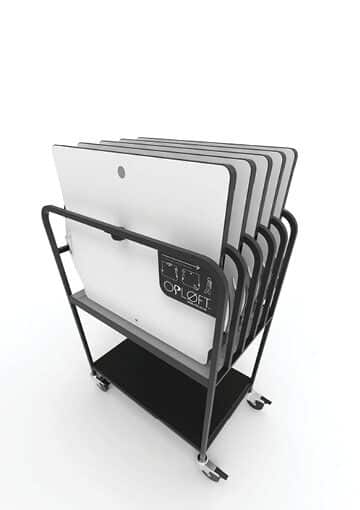
The challenge
Bang Creations was tasked with creating a storage accessory for Posturite's portable sit-stand desk Opløft; which we also designed and manufactured. The primary design consideration was for the storage platform to have great ergonomics, so it was safe to use for all ages. Additionally it had to be in-keeping with the Nordic design style of the Opløft, be able to be easily moved, and be long lasting.
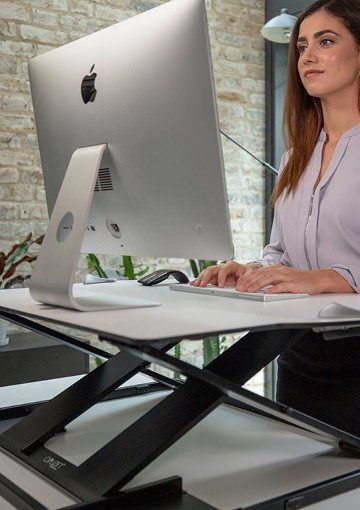
The challenge
The storage platform was a relatively simple product on the surface, however the ergonomics and usability were more complicated than expected. The Opløft weighs 12.5kg, so the design had to ensure that the user did not lift the desk incorrectly, which could cause injury.
Additionally, the storage platform had to be engineered to be suitable strong, since it would have to hold 63kg.
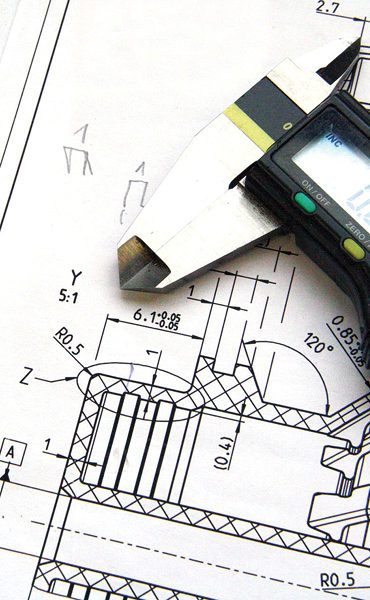
The solution
To ensure that the product had exceptional ergonomics we went through several prototypes. From our initial sketches and anthropometric data we made a wooden test rig, and had multiple people test it. We observed their interactions with the product, noting the different ways they tried to remove the product from the stand. From this we noticed several people tried to lift the desk straight out, the least describable interaction, since this could lead to back injury.
The solution
To resolve this we decided on using graphics on the stand which indicated on how to use it properly, rather than physically stopping the user lifting it out, since this would make the storage platform difficult to use, as well as less aesthetically attractive. We also used this testing to validate the correct height of the platform, having people varying from the 1st percentile woman to the 99th percentile man, this allowed us to ensure that the ergonomics would be suitable for all users.
The outcome
Once we had successfully determined the ergonomics of the storage platform, we could move on to sourcing manufacturers. We sourced locally in Bristol, using metalwork engineers for the manufacture and assembly of the main steel frame. Additionally, we used a CNC and upholstery manufacturer in Bristol for the protective platform layer.
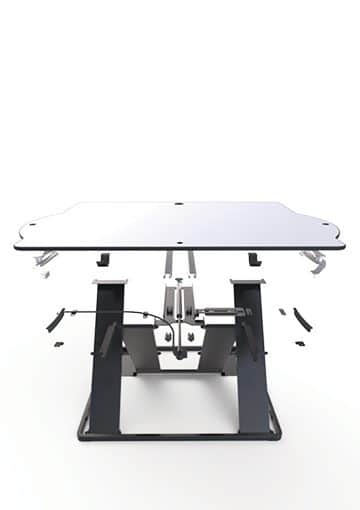
The outcome
We had a two pre-production prototypes made before commissioning full-scale production. From these we confirmed the stand worked as intended, and made a couple of performance tweaks for where it did not. The second pre-production prototype worked well and so the product was signed off.
Production is now in full swing, using local manufacturing capabilities in Bristol.
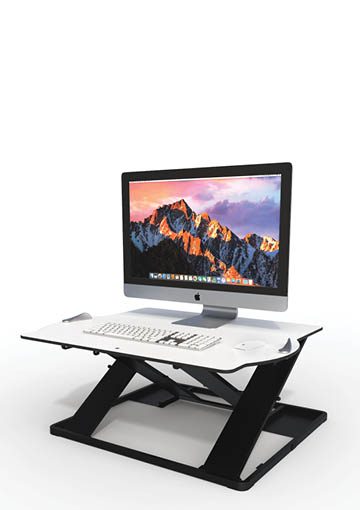
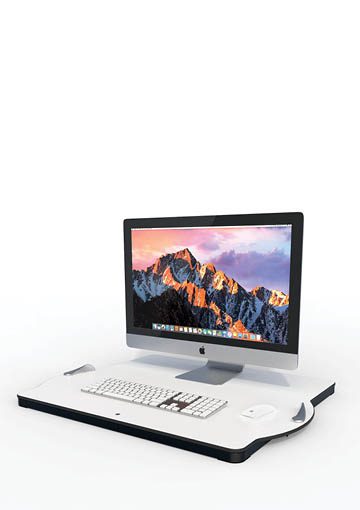

Ergonomic product design & testing
Ergonomic design for a storage system is not, at first glance, the most exciting. However, when the item being stored is large, weighs over 12 kilos and is going to be used by all ages, the human factors get interesting.
The challenge
Bang Creations was tasked with creating a storage accessory for Posturite’s portable sit-stand desk Opløft; which we also designed and manufactured. The primary design consideration was for the storage platform to have great ergonomics, so it was safe to use for all ages. Additionally it had to be in-keeping with the Nordic design style of the Opløft, be able to be easily moved, and be long lasting.
The challenge
The storage platform was a relatively simple product on the surface, however the ergonomics and usability were more complicated than expected. The Opløft weighs 12.5kg, so the design had to ensure that the user did not lift the desk incorrectly, which could cause injury.
Additionally, the storage platform had to be engineered to be suitable strong, since it would have to hold 63kg.
The solution
To ensure that the product had exceptional ergonomics we went through several prototypes. From our initial sketches and anthropometric data we made a wooden test rig, and had multiple people test it. We observed their interactions with the product, noting the different ways they tried to remove the product from the stand. From this we noticed several people tried to lift the desk straight out, the least describable interaction, since this could lead to back injury.
The solution
To resolve this we decided on using graphics on the stand which indicated on how to use it properly, rather than physically stopping the user lifting it out, since this would make the storage platform difficult to use, as well as less aesthetically attractive. We also used this testing to validate the correct height of the platform, having people varying from the 1st percentile woman to the 99th percentile man, this allowed us to ensure that the ergonomics would be suitable for all users.
The outcome
Once we had successfully determined the ergonomics of the storage platform, we could move on to sourcing manufacturers. We sourced locally in Bristol, using metalwork engineers for the manufacture and assembly of the main steel frame. Additionally, we used a CNC and upholstery manufacturer in Bristol for the protective platform layer.
The outcome
We had a two pre-production prototypes made before commissioning full-scale production. From these we confirmed the stand worked as intended, and made a couple of performance tweaks for where it did not. The second pre-production prototype worked well and so the product was signed off.
Production is now in full swing, using local manufacturing capabilities in Bristol.

Ergonomic product design & testing
Ergonomic design for a storage system is not, at first glance, the most exciting. However, when the item being stored is large, weighs over 12 kilos and is going to be used by all ages, the human factors get interesting.
The challenge
Bang Creations was tasked with creating a storage accessory for Posturite’s portable sit-stand desk Opløft; which we also designed and manufactured. The primary design consideration was for the storage platform to have great ergonomics, so it was safe to use for all ages. Additionally it had to be in-keeping with the Nordic design style of the Opløft, be able to be easily moved, and be long lasting.
The challenge
The storage platform was a relatively simple product on the surface, however the ergonomics and usability were more complicated than expected. The Opløft weighs 12.5kg, so the design had to ensure that the user did not lift the desk incorrectly, which could cause injury.
Additionally, the storage platform had to be engineered to be suitable strong, since it would have to hold 63kg.
The solution
To ensure that the product had exceptional ergonomics we went through several prototypes. From our initial sketches and anthropometric data we made a wooden test rig, and had multiple people test it. We observed their interactions with the product, noting the different ways they tried to remove the product from the stand. From this we noticed several people tried to lift the desk straight out, the least describable interaction, since this could lead to back injury.
The solution
To resolve this we decided on using graphics on the stand which indicated on how to use it properly, rather than physically stopping the user lifting it out, since this would make the storage platform difficult to use, as well as less aesthetically attractive. We also used this testing to validate the correct height of the platform, having people varying from the 1st percentile woman to the 99th percentile man, this allowed us to ensure that the ergonomics would be suitable for all users.
The outcome
Once we had successfully determined the ergonomics of the storage platform, we could move on to sourcing manufacturers. We sourced locally in Bristol, using metalwork engineers for the manufacture and assembly of the main steel frame. Additionally, we used a CNC and upholstery manufacturer in Bristol for the protective platform layer.
The outcome
We had a two pre-production prototypes made before commissioning full-scale production. From these we confirmed the stand worked as intended, and made a couple of performance tweaks for where it did not. The second pre-production prototype worked well and so the product was signed off.
Production is now in full swing, using local manufacturing capabilities in Bristol.
